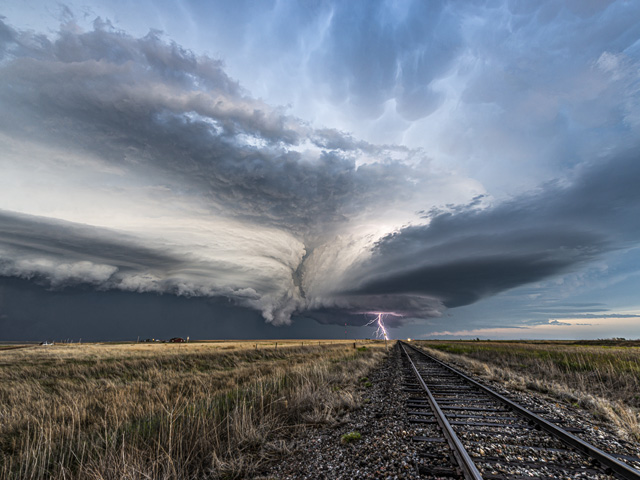Rainfall Chances for WCB
Series of Storms Help Benefit Western Corn Belt
Editor's Note: This story was updated Aug. 21 at 9:02 a.m., from when it was originally posted Aug. 17.
**
The setup that produces the best chances to see significant rainfall across the Northern Plains is a trough in the West with a ridge in the East. The trough provides the storm systems that come out of the Rockies. The ridge provides the moisture as it pulls humid air northward from the Gulf of Mexico.
We saw this setup nicely this week as a system dug into the West and came through the Plains with widespread scattered showers. Two more systems currently moving into the Pacific Northwest will each produce a system with more rainfall chances for the Northern Plains through Aug. 25. And after a day or two of ridging in the West, models suggest that there could be another storm to end the week. We have not seen a series of systems like this since the spring.
What we have typically seen this summer has been a few frontal boundaries that have moved through with no real anchor in the West to provide widespread lift and organization for thunderstorms. Last week saw a bit of a change, but the troughs moved more into Central Canada instead of the West. As they moved through the Northern Plains, they did produce some showers, and areas of moderate rainfall were noted in some areas. That led to good-to-excellent crop rating increases in both corn and soybeans across North Dakota last week, but was not enough to stave off areas of dryness in South Dakota, Nebraska, Minnesota or Iowa -- states that all saw ratings decline.
P[L1] D[0x0] M[300x250] OOP[F] ADUNIT[] T[]
That setup did produce good rainfall for the Eastern Corn Belt, however. And although good-to-excellent ratings declined a bit in Indiana, and Illinois after a large increase the week before, conditions for filling corn and soybeans continue to be quite good and many of these states could be closing in on record yields.
You can read more about those estimated yields in the 2021 DTN Digital Yield Tour coverage here: https://www.dtnpf.com/….
But the Western Corn Belt is finally getting more into the pattern it needs to produce good rainfall. The first storm that went through Aug. 19-20 was set up to be the best of the four. Good moisture streamed northward along with hot weather that produced lots of instability for thunderstorm development.
As the system moves eastward on Aug. 21 into the Eastern Corn Belt, it has lost intensity, a rare event to occur so far this summer. Showers from this first storm did produce widespread rainfall over North Dakota and northwest Minnesota, areas that have been thirsting for rainfall for a long time and where drought has been the harshest.
According to DTN's analysis, widespread rainfall ranged from 1 to 3 inches with locally heavier amounts. A section of north-central North Dakota saw more widespread 2-to-4 inches of precipitation. Northern Iowa also saw more widespread beneficial rainfall to ease its drought concerns as well. But there were some holes that did develop. A rather large one was from eastern South Dakota and northeast Nebraska into southwest Minnesota. Here, mostly isolated showers moved through and many were unlucky.
The following two storms may not have the greatest coverage or intensity of storms, but the scattered showers should add to the rainfall totals and may help to fill in some gaps that occurred with the first storm.
The active pattern may continue with a final storm or possibly two late next week around Aug. 26-28 in the Western Corn Belt before shifting eastward. Models have only recently latched onto this potential and we should keep that in mind when we look at the progression. The forecast is likely to change in this regard. But it could be another link to better rainfall conditions to close out August.
Temperatures are also reversing course in the Western Corn Belt. Readings ahead of this series of storms have been high. High temperatures in the Dakotas and Montana eclipsed 100 degrees Fahrenheit for several days earlier this week. Temperatures have since fallen dramatically with highs in a more comfortable range slightly below normal in the 70s.
As far as the impact on filling corn and soybeans, it is too late to add to yields, but it is not too late to preserve what is still there. Better rainfall and more seasonable temperatures should improve conditions for both crops to close the month.
John Baranick can be reached at john.baranick@dtn.com
(c) Copyright 2021 DTN, LLC. All rights reserved.




